|
The Monument
On August 15, 2009, a six meter long wall,
clad in black granite, topped with four stone mountains
replicating the Island of Hong Kong, was unveiled on the banks
of the Rideau River in Ottawa. Carved into the granite are the
names of 1976 Canadian men and women of The Royal Rifles of
Canada and The Winnipeg Grenadiers. They were the first
Canadians to engage in a land battle in the defense of The
Island of Hong Kong during World War Two. Of the 1976 soldiers who began the Battle
of Hong Kong 290 were killed in action. While being held captive
by the Japanese for forty-four months another 267 died of the
brutal treatment and neglect at the hands of the Japanese.
Because The Battle was deemed a ‘defeat’ those who fought it
were not given the respect they were due for their courageous
and tenacious struggle against overwhelming odds. They were
forgotten. For years they fought another battle for the
recognition they so richly deserved. They won the final battle
on August 15, 2009. ____________________________________________________
The Hong Kong Veterans Memorial Wall, on
the Rideau River near Canada’s Parliament Buildings, lists the
names of the 1,975 men and women that helped defend Hong Kong.
The 17 day battle was Canada’s first military engagement of the
Second World War. ____________________________________________________
THE FOLLOWING LINKS COURTESY OF BILL LAKE
Bill Lake is a man of many facets. A soldier, a sailor and a document maker, the latter his current passion. He started his documentary about the Fall of Hong Kong, "BATTLE FOR A BARREN ROCK", in 2000. (It took almost 8 years to complete). He has what he calls his War Group of about 100 people interested in this part of HK history. He forwards all new, or interesting, information to them on a regular basis. His ability to dig into the past and come up with rich nuggets is amazing. Without him this page would not exist. That's Bill during The Remembrance Day Ceremony in Hong Kong. Bill, an ex- artillery man, is an avid
member of the Hong Kong Ex Servicemen’s Association, and also
the Gunners Roll of Hong Kong. As if that's not enough to keep
him busy he is working on a follow-up book to "Battle For A
Barren Rock" entitled "Prisoner On A Barren Rock". All the links to clips
listed below came to me from Bill
The Japanese invasion of Hong Kong To view, click here
Company Sergeant-Major John Robert Osborn died on December 19, 1941, defending British garrison of Hong Kong against Japanese attack. While fighting with small numbers of his unit, The Winnipeg Grenadiers, Osborn repeatedly showed great acts of heroism, including attacking the enemy single-handedly. On several occasions he picked up and threw back Japanese grenades that had landed in Canadian positions. When he was unable to return one of these grenades, he threw himself on it and was killed instantly. Company Sergeant-Major Osborn was awarded the Victoria Cross for his actions that day. Click here.
Royal Rifles Rfm. Laureat Bacon The amazing story of Ronald Roultledge DCM, CD Ronald Routledge was born in
Regina and joined the Permanent Force just prior to the outbreak
of the war. He had finished high school during the Great
Depression and was coaxed into joining the Army by his father
who had fought in World War I and was closely associated with
the local military. Ronald was a member of The Royal Canadian
Corps of Signals and attached to The Winnipeg Grenadiers and
sent to Hong Kong. On December 25th, 1941 he was captured and
imprisoned. Aboard USS Missouri, BB-63. Tokyo Bay, Japan. You will hear the ACTUAL VOICE OF GENERAL MACARTHUR NEVER BEEN SHOWN TO GENERAL PUBLIC BEFORE. Please click here to the Japanese Surrender. (Thanks to Bob Tatz.) The Apology On December 8th, 2011 the Japanese issued a formal apology to Canadians they held captive following the fall of Hong Kong on December 25th, 1941, The treatment by the Japanese of POW;s was, by any standard, beyond inhumane. To some survivors it is too late in coming. To others it means little. Rwanda is an example of what being unforgiving can bring about, Is it ever too late to say you are sorry? Click here to hear the news as it broke.
During the occupation of Hong Kong the
Chinese civilian population suffered unspeakable atrocities
at the hands of the Japanese. In part, this is their story.
The year 2011 is the 70th anniversary of Japan’s occupation
of Hong Kong. To the older generation, the tragic three
years and eight months will not be forgotten. Pictured here are Peter Choi, President of The Second World War Veterans Assocation, and Bill Lake, an Association Member. As local forces were heavily
outnumbered, after holding out for eighteen days, Hong Kong
fell into the hands of Japan. Click here to view a clip of their lives in hell. General Christopher Maltby's
report in The London Gazette of January, 1948 Click here to listen to a magnificent version of the original The Last Post, The conductor of the orchestra is Andre Rieu from Holland. The young lady, her trumpet and her rendition of TAPS makes your hair stand on end. Many of you may never have heard taps played in its entirety, for all of the men & women that have died for you to have the freedom you have in America. This is an opportunity you won't want to miss and I guarantee you'll never forget. Here is Taps played in its entirety. The Original version of Taps was called Last Post, and was written by Daniel Butterfield in 1801. It was rather lengthy and formal, as you will hear in this clip, so in 1862 it was shortened to 24 notes and re-named Taps. Melissa Venema is playing it on a trumpet whereby the original was played on a bugle. To listen to this incredible solo click here. This tribute paid to all veterans, of every war, is performed so movingly by Terry Kelly
____________________________________________________ |
|
|
<<< Back |
Page 32 |
Next >>> |
|

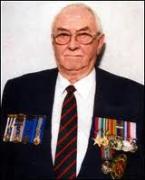
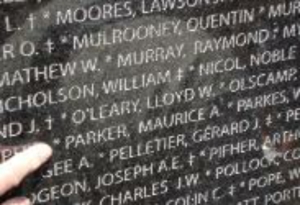 On
August 15, 2009 I was fortunate to be able to attend the
unveiling of The Hong Kong Veterans Wall in Ottawa located on
National Capital Commission property at the corner of King
Edward Avenue and Sussex Drive in Ottawa. It is a fitting
tribute to all who endured the unendurable should have this wall
that will endure for all to see for years to come. It was a day
to be remembered. Ron Parker
On
August 15, 2009 I was fortunate to be able to attend the
unveiling of The Hong Kong Veterans Wall in Ottawa located on
National Capital Commission property at the corner of King
Edward Avenue and Sussex Drive in Ottawa. It is a fitting
tribute to all who endured the unendurable should have this wall
that will endure for all to see for years to come. It was a day
to be remembered. Ron Parker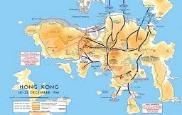
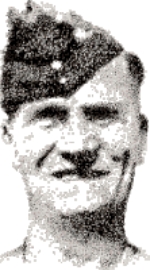
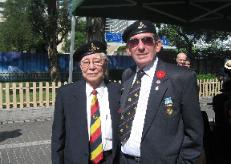
 At
the time of this writing we have just passed "Remembrance
Day" as it is called in Canada. Whatever November 11 is
called in your country the message of this song is as clear
as it is beautifully moving. It communicates no matter what
your language. A Pittance of Time - written and preformed by
Terry Kelly
At
the time of this writing we have just passed "Remembrance
Day" as it is called in Canada. Whatever November 11 is
called in your country the message of this song is as clear
as it is beautifully moving. It communicates no matter what
your language. A Pittance of Time - written and preformed by
Terry Kelly